Potain's aspirator
Potain's aspirator, mostly nickel plated steel, in case, by Arnold of London, c.1916














No.1 Field Surgical Pannier, wood and wicker, with extensive contents, mostly by Maw or Arnold, 1905 pattern, c.1916
Potain's aspirator, mostly nickel plated steel, in case, by Arnold of London, c.1916
Nickel plated syringe
Valve unit
Cannula mounting
Cannulas(3) and trocars(3)
Blunt stilettes(3)
Nickel plated needle
Nickel plated rack
Tubes (3)
No.3 catgut in phials (6 per case) in cases(5)
Tin plated can with brass cap
Saline infusion apparatus (cased)
Needle, brass and steel
Needle, brass and steel
Nickel plated nozzle
Bottle of corrosive sublimate and mercuric chloride and drug

Hot water bottle
Candle lantern
Medium silkworm gut (cased)
Fine silkworm gut (cased)
Tin of soda for sterilizer and sodium carbonate and reagent
Metal bottles for methylated spirit and reagent
Rolls (2) of surgeons rubber adhesive plaster and bandage
Square iron canister of Tincture of Chloroform and Morphine (B.P. 1885), with contents remaining. 157 mm x 60 mm, 240g. Unknown maker, probably Maw or Arnolds, American, 1915-1916.
Bottle of sterilized drainage tubes
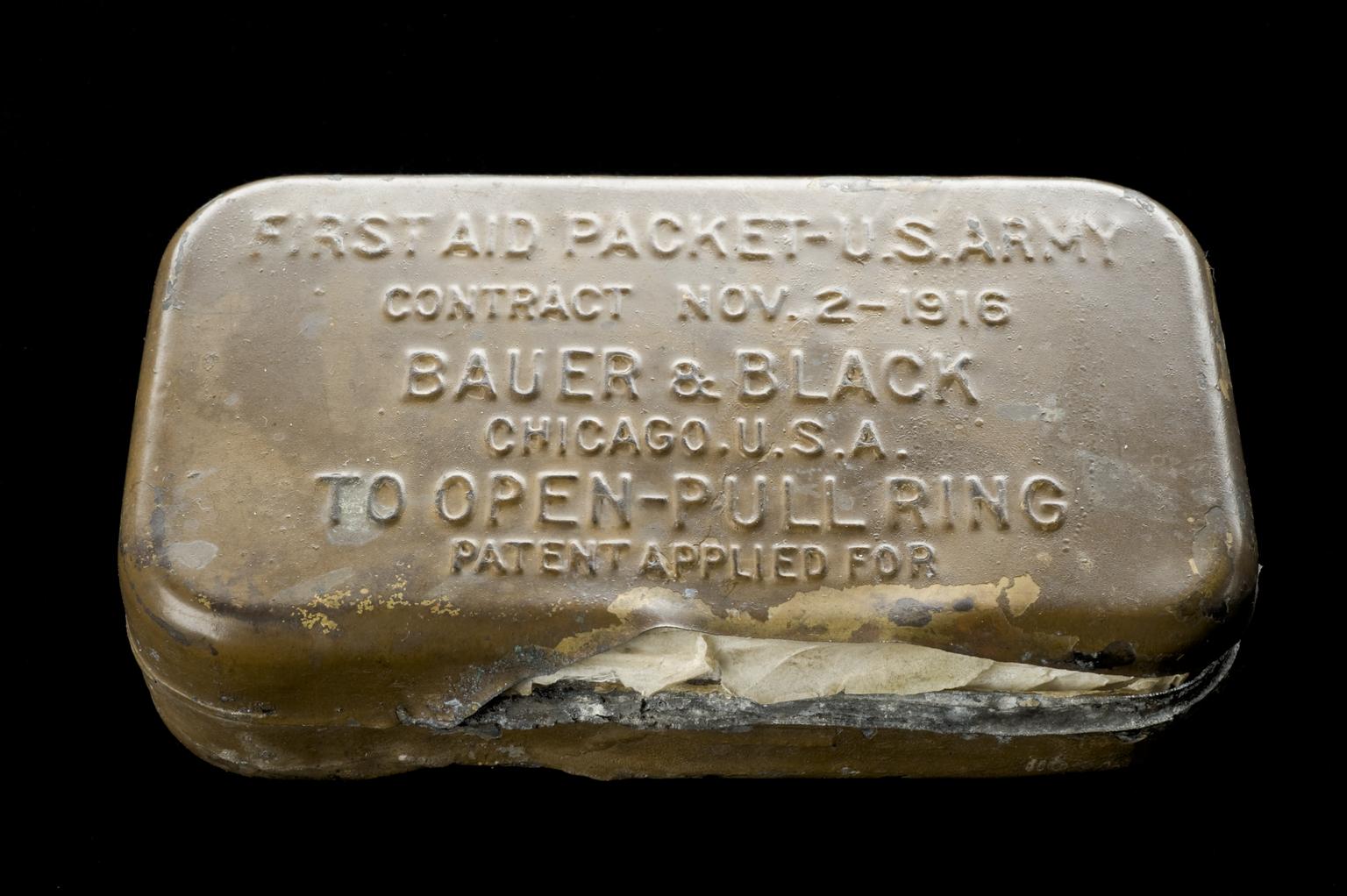
First field dressing, in pull-ring packet, by Bauer and Black of Chicago, for U.S. Army, gauze in tin, 1916
Soldiers of nearly all the nations involved in the First World War would be expected to carry a so-called First Field Dressing or an equivalent. This was a basic emergency first aid kit consisting of a length of gauze, a small bandage pad, a safety pin and an ampoule of iodine (later replaced by a mild antiseptic). The kit was carried in a waterproof cover. This example is in a tin can which was opened with a ring pull and is of the type used by the United States Army during the First World War.
Sterile tubes (12) of silk in tins (7)
Jacques' catheter
Bottle of carbolic acid and drug
Tubes of soft paraffin (2) and drug
Instrument pouch
Two Samways rubber tourniquets in case, by Maw, the case originally had more extensive contents, c.1916
Applying a tourniquet to a wounded arm or leg to control bleeding is a key aspect of emergency treatment. But despite centuries of battlefield use, their use during the First World War was fiercely contested. After the initial application, long delays before there was further medical attention, including the removal of the tourniquet, could starve damaged limbs of blood, leading to unnecessary amputations and even death.
The Samways tourniquet conists of a length of rubber tubing, which is stretched around the bleeding limb and held in place via a metal 'clip'.

One of two Samway's tourniquets by Maw, c.1916

One of two Samway's tourniquets by Maw, c.1916
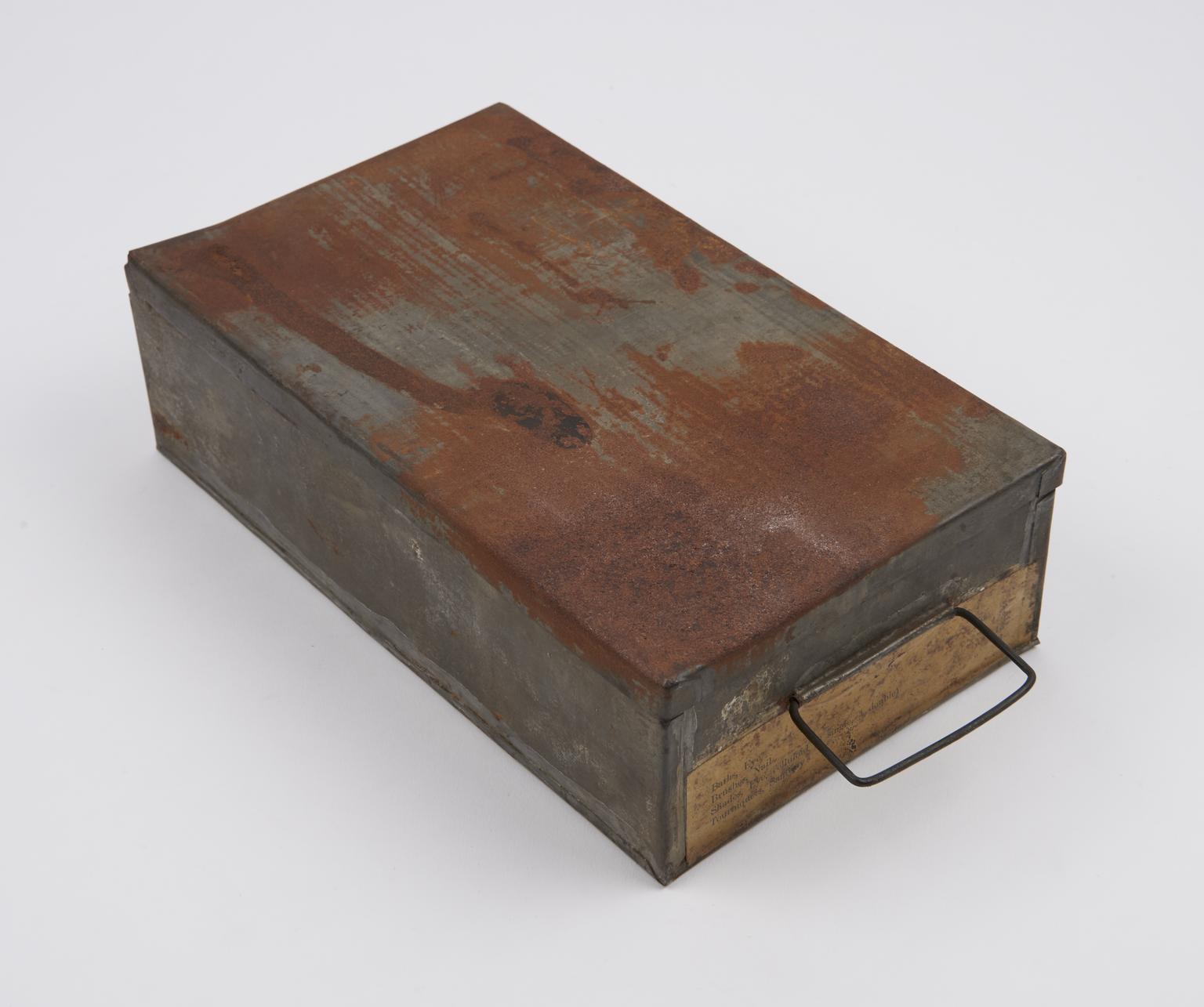
Case for 2 Samway's tourniquets, by Maw, c.1916
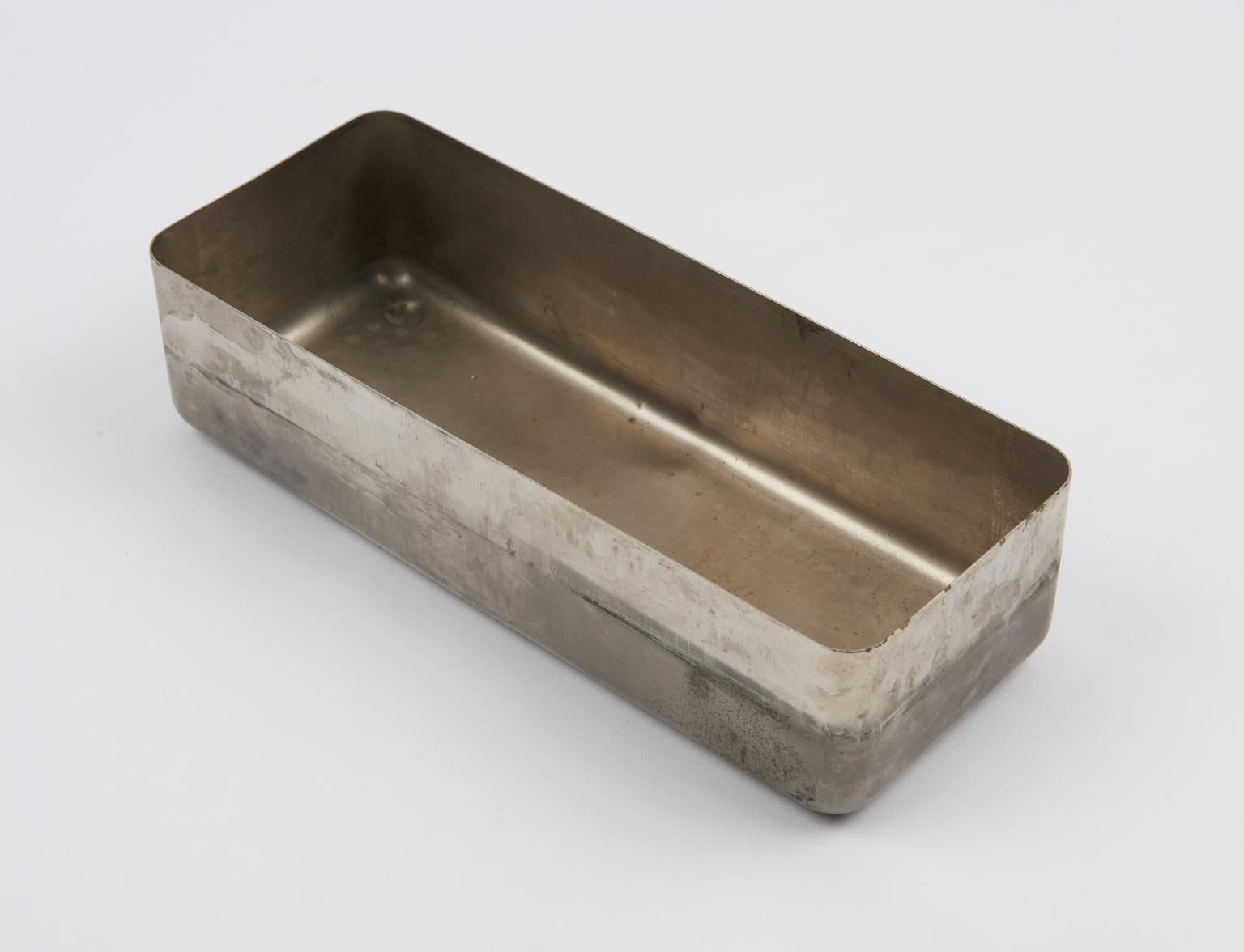
Bath, for instrument sterilizer, by Arnold & Sons
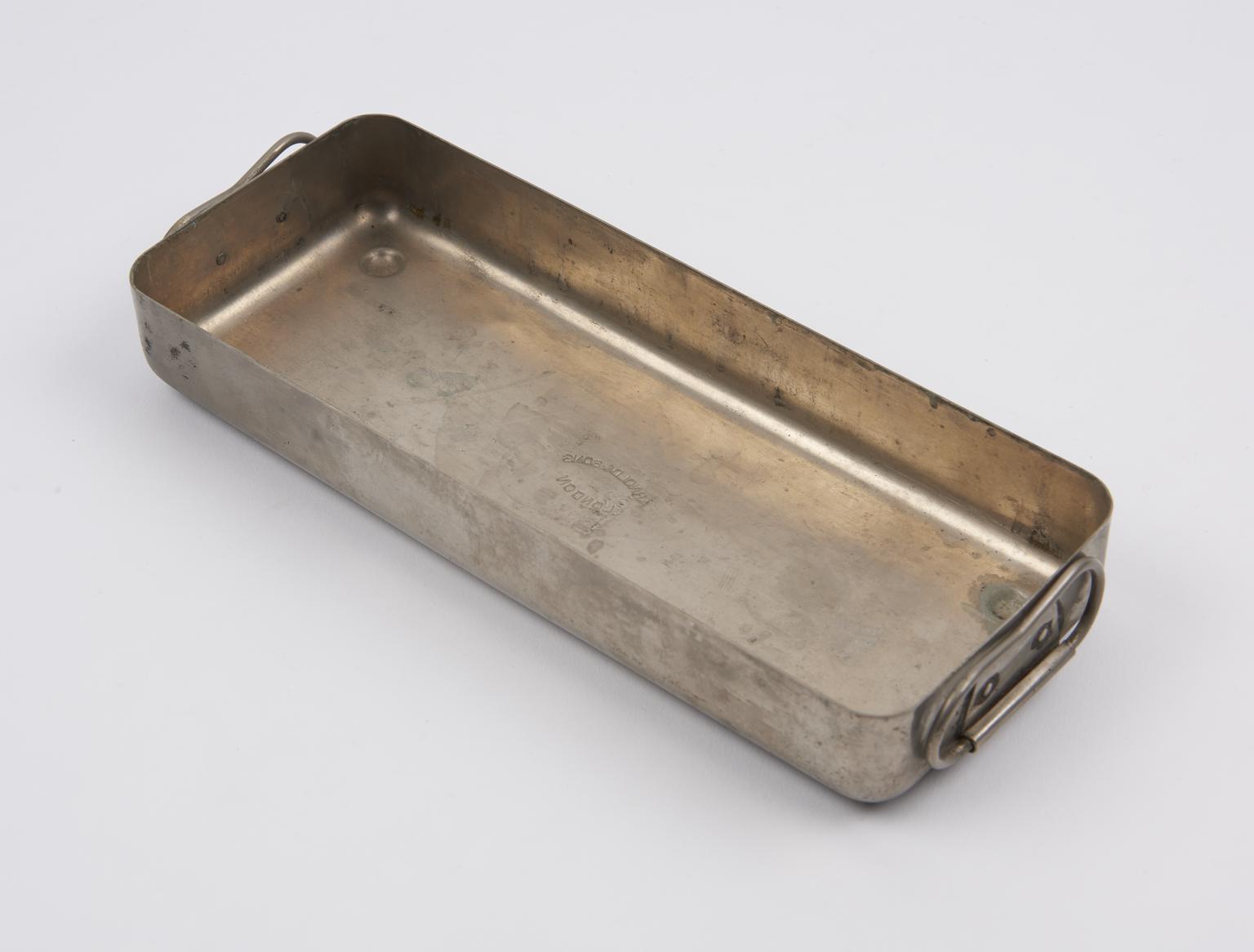
Lid for instrument sterilizer, by Arnold & Sons
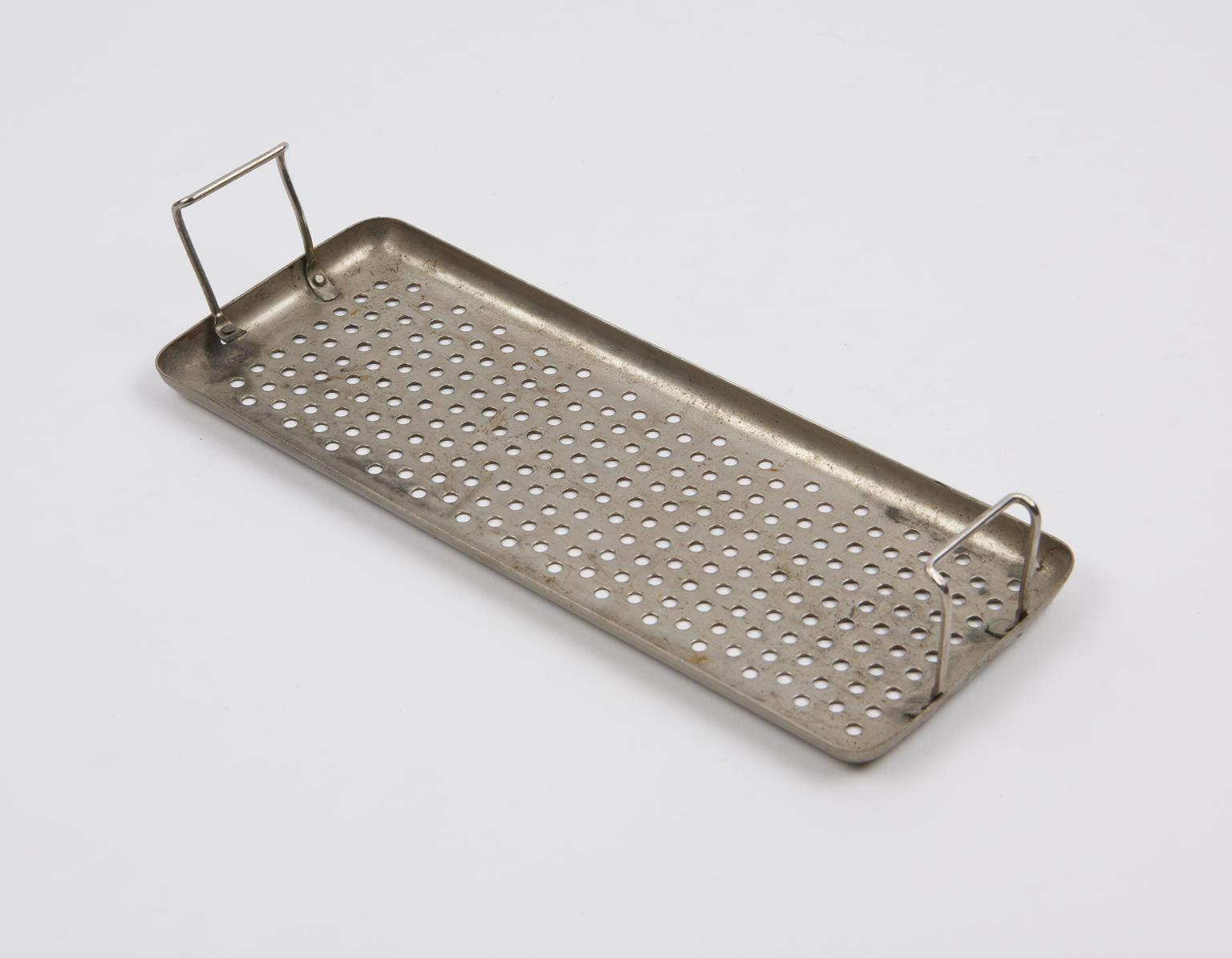
Platform, for instrument sterilizer, by Arnold & Sons
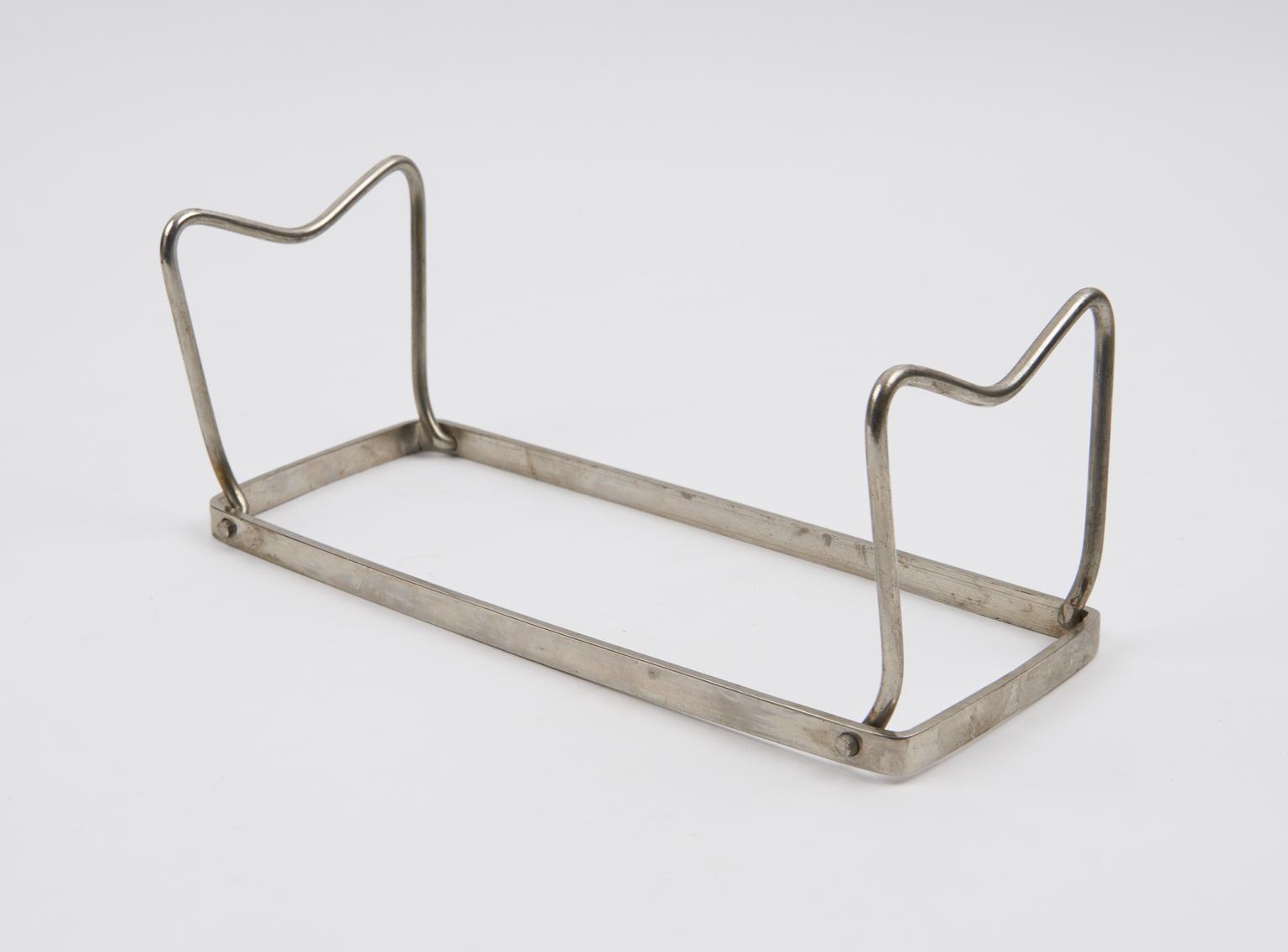
Stand, for instrument sterilizer, by Arnold & Sons
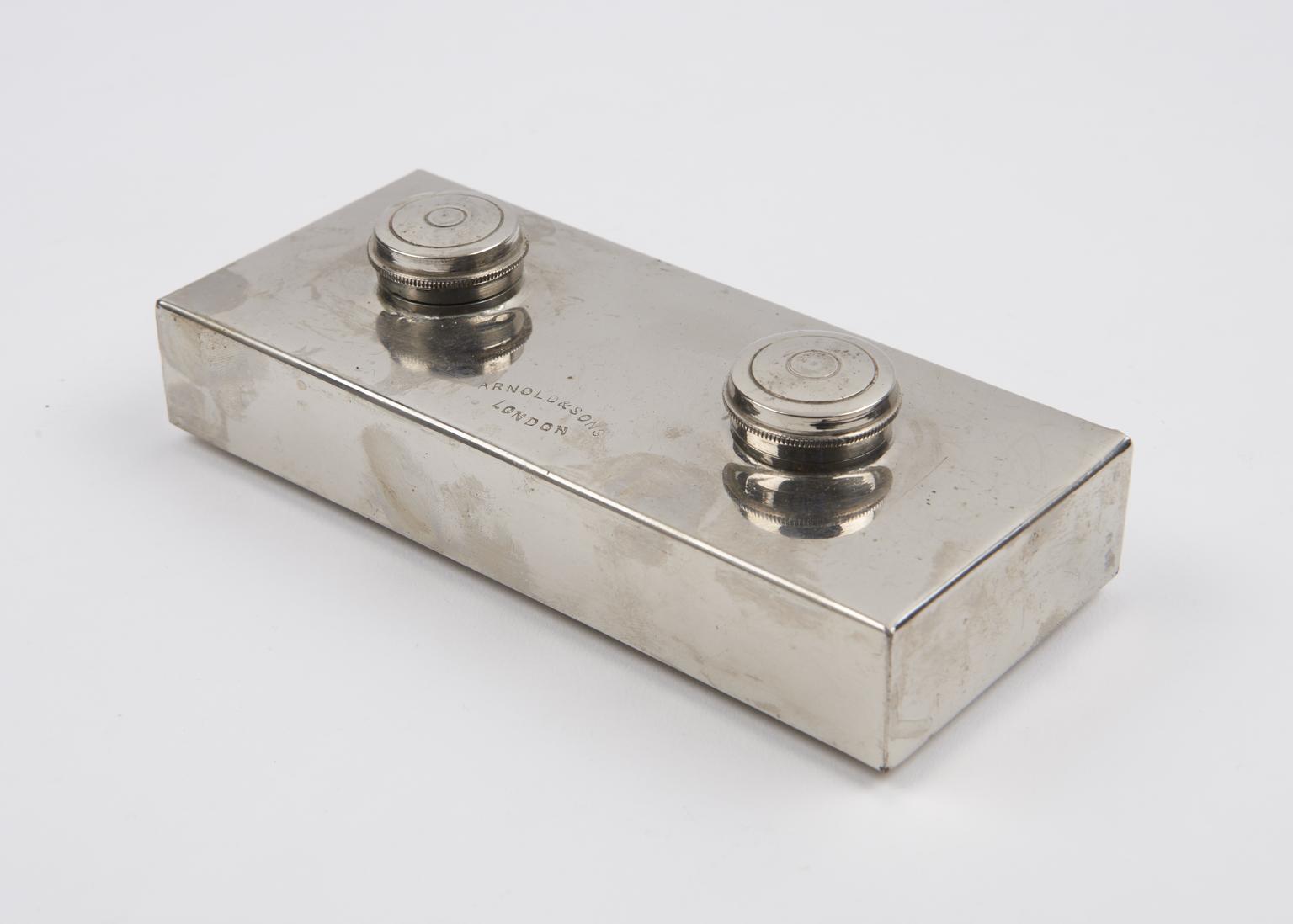
Spirit burner, for instrument sterilizer, by Arnold & Sons
Hoffman's gouge forceps
Fergusson's lion forceps
Pouch, canvas, by Arnold of London, with surgical instruments, c.1916
Sterilized catgut (6 phials) and sterilised silk (6 phials) in case
Suture needles (2)
Size 7 suture needles (3)
Size 8 suture needles (3)
Size 9 suture needles (2)
Size 10 suture needle
Size 11 suture needle
Horsley's bone forceps
Bullet scoops
Key's hernia director and Key
Amputation saw
Catheter tube (cased)
Pouch, canvas, by Maw of London, with surgical instruments, c.1916
Box for scalpels
Steel scalpel
Steel scalpel
Steel scalpel
Steel scalpel
Steel bistoury
Aneurism needle
Size 6 suture needles (2)
Size 7 suture needles (2)
Size 8 suture needles (2)
Size 9 suture needles (2)
Size 10 suture needles
Size 11 suture needles (2)
Case, tin plated
Sterile tubes (12) of silk
Cataract needle and spud
Bullet scoop
Key's hernia director and Key
Horsley's bone forceps and Horsley
Wakely's artery forceps and Wakley
Amputation saw
Catheter tube (cased)
Spencer Well's artery forceps
Spencer Well's artery forceps (3 pairs)
Spencer Well's artery forceps (2 pairs)
Steel forceps
Pouch, leather, with 3 dental forceps, 2 by Ash of London, one by Dental Manufacturing Co. , c.1916
No.1 dental forceps for incisors (lower) or canines or bicuspids (lower) or stumps
No.4 dental forceps for molars (upper)
No.7 dental forceps for bicuspids (upper) or stumps
Case for No.1 Field Surgical Pannier, 1905 pattern, Chicago, United States, c.1916













